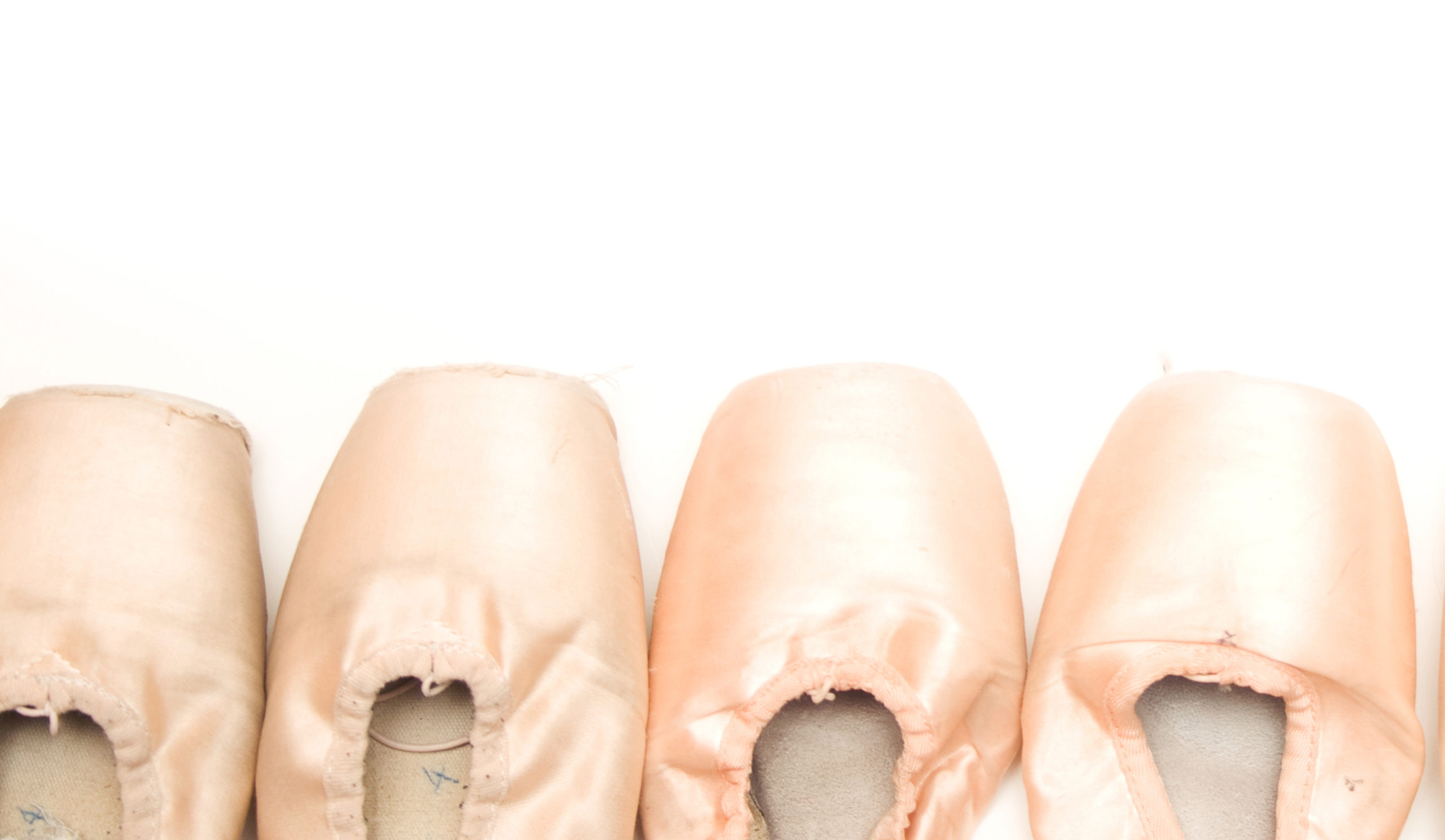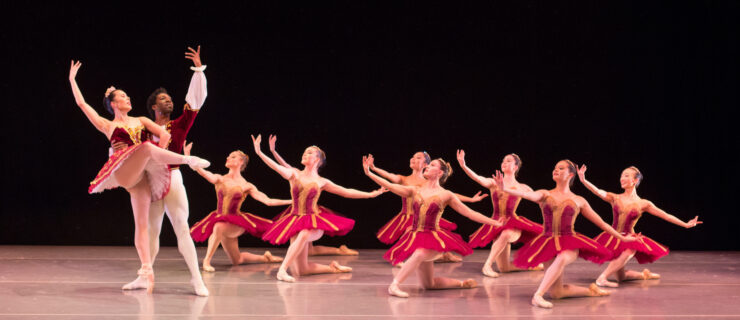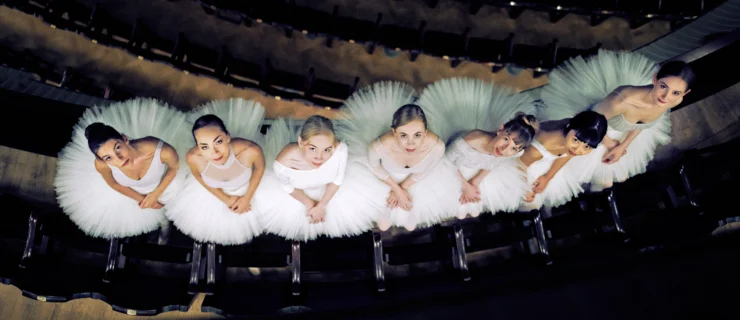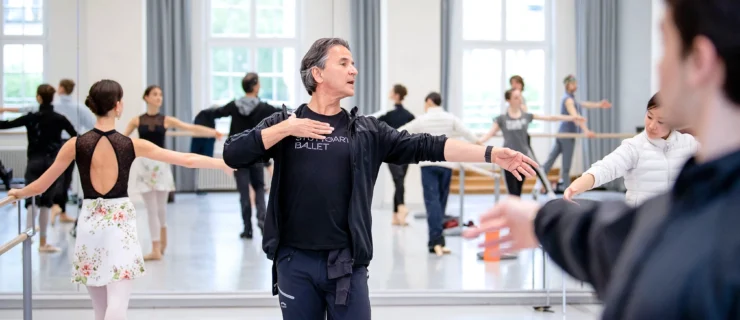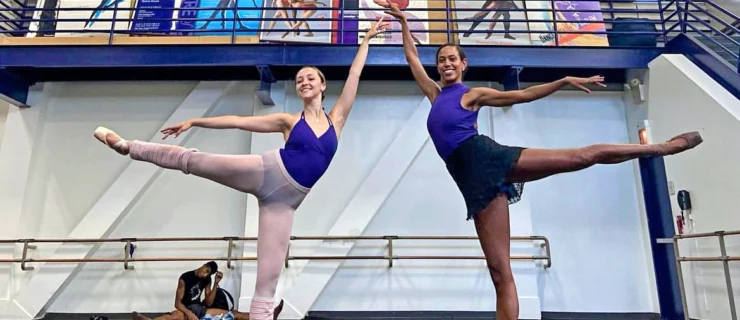Your Best Body: Beyond the Hype
Kathi Martuza has legs to die for. On pointe in an impossibly high développé, her standing leg is so extended that it bows slightly backwards. The Oregon Ballet Theatre principal admits that she enjoys the advantages of hyperextended knees. “My legs always look straight,” she says, “and it creates a really nice line.”
But Martuza has found that she can’t allow herself to give into her hyperextension, letting her legs sink backwards. Not only can it strain the backs of her knees, this “lazy” placement also renders multiple turns nearly impossible. She is always in search of her “straight” standing leg. “You have to find it over time by strengthening the right muscles, but you also have to find it daily,” she says. For Martuza, this process starts anew every morning at the barre with a simple rule: While standing in first position, the heels must touch.
Whether you’re hyperextended is just a roll of the genetic dice—you’ve either got it, or you don’t. Although most dancers covet the long lines that hyperextension creates, it’s a double-edged sword. Jennifer Green, a physical therapist and founder of PhysioArts in New York City, says that dancers with hyperlaxity in their knees tend to be more flexible in the rest of their body as well—which means they have a host of strength issues to work on and potential injuries to avoid.
What Not To Do
According to Green, dancers who consistently allow their standing legs to bow backwards into full hyperextension can loosen the knee joints to a dangerous degree. “It’s not just flexible muscles, you have overstretched ligaments as well—and ligaments don’t tighten up again,” she says. “You’ve lost that security in the joints that the ligaments used to provide.”
In addition to damaging the joint, you’re opening yourself up to a host of other problems. Green likens it to children’s blocks: If you have your blocks stacked up straight, you have a strong structure; if one block is off to the side, something else will have to compensate for it or the whole thing will fall. “There becomes a chain reaction,” she says. “A counterbalance will come in the form of gripping in the muscles, or swaying your lower back and pushing your hips forward.” While Green often sees knee pain in hyperextended dancers, she is more troubled by the core instability that sinking back into hyperextension can cause.
“That standing leg has to be straight at the back of the knee and up through the hips into the core,” says Kathleen Mitchell, a teacher at Boston Ballet School. However, since the working leg is not bearing any weight, “it can go ahead and just stretch into hyperextension for that beautiful line.”
Discover “Straight”
Finding the correct position to stand in can be difficult because your leg won’t feel like it’s straight—you actually have to bend the knee slightly. To discover a true vertical line, Mitchell says to sit on the floor with your legs extended in parallel in front of you. Straighten your knees without allowing your heels to come up off the floor. This will fire your quad and glute muscles and emulate what you should feel in a strong supporting leg. Try this exercise with flexed, then pointed, feet, and practice it often to learn the muscle memory of what “straight” legs actually feel like.
Strengthen To Straighten
You should also actively work to strengthen the muscles needed to keep your legs straight. “Even just strengthening your calf and hamstring muscles helps,” says Green, “but I like to do it dynamically, and in a way that you will use the legs while you’re dancing.”
Start by standing sideways to a mirror. Tie a Thera-Band in a loop around your legs and the leg of a barre. Stand in parallel, facing away from the barre with the Thera-Band just below your knees. Step forward until you feel the Thera-Band pull your legs back, but be careful not to let your knees give in to your hyperextension. Looking in the mirror, resist the backwards pull until your legs have reached a truly straight line. Maintaining this leg position, relevé a few times in parallel, then try the exercise on one leg at a time. (See demo on previous page.)
If You Don’t Have It
Although dancers without hyperextension may feel like they got the short end of the genetic stick, there’s good news. “In general, tight dancers have more longevity,” says Green. They also tend to have more strength and be better jumpers, she adds.
Doing anything that forces your knees backward in hopes of gaining hyperextension is dangerous and can cause a myriad of serious injuries, including overstretched ligaments. Stretching your hamstrings the right way is the safest path to straighter legs. According to Green, this means stretching with an engaged quad muscle. “Using your quads naturally relaxes the hamstrings,” she says. “When you pull up your quads, you’re actively straightening your knee and stretching your hamstring at the same time. If you do that in a stretch, you’re going to get to that last bit of hamstring tightness that’s behind the knee.”
One of the biggest mistakes dancers make is lying on their backs and développéing the leg all the way up to the top of their range of motion to stretch it. Instead, you should work up to that height with a straight leg (as in a slow battement), slowly stretching through each point of your range of motion while engaging the quad muscle.
Martuza admits that, while she is thankful to be frequently complimented on her hyperextension, it’s more meaningful to be praised for her musicality or épaulement, rather than an aspect of her physicality she was born with. It isn’t what you’ve been given, but what you do with what you have that will ultimately make you an impressive dancer. “Everybody has strengths and weaknesses,” she says. “Play up your strengths and show them off. Then work on your weaknesses.”
